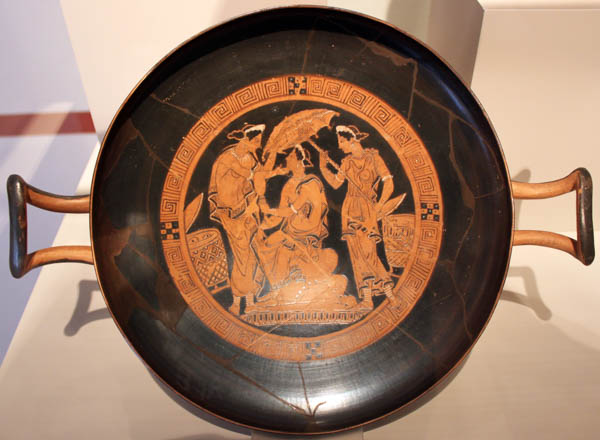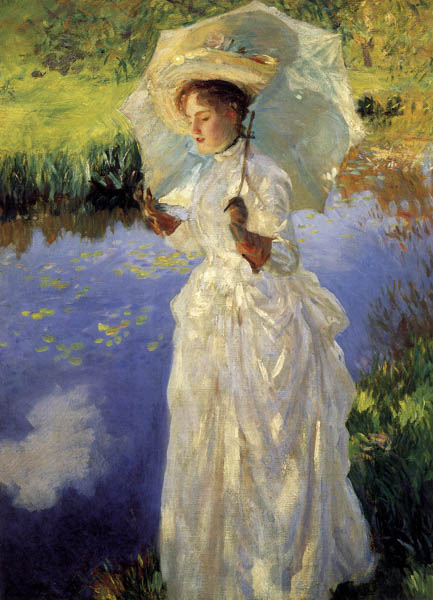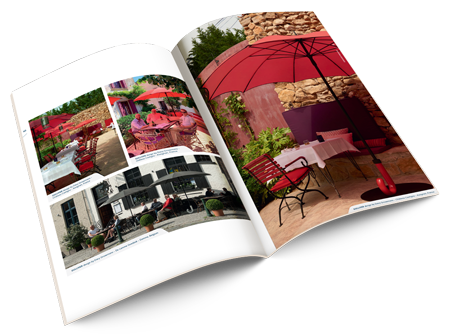Parasols – 4000 years of functional beauty

February 10th is World Parasol Day.
Parasols have been in use for several thousand years as protection against the sun. In the distant past, parasols were made with the large leaves, wood and palm branches which people found around them. Techniques discovered later allowed the use of animal hides or paper. The parasol took on its familiar modern form as long as 4000 years ago, appearing in the art of the ancient Egyptian, Assyrian and Chinese cultures.
Parasols were fairly difficult to make and therefore expensive, so their use was pretty much confined to the nobility, royalty and the clergy. They came to symbolise wealth and power.
People of wealth didn’t want tanned skin (a sign that one had to work on the land), so parasols became ever more popular among the upper classes. Centuries before Christ, parasols had reached Greece and Rome where they were used by wealthy women as fashion accessories.

Parasols were now made from a variety of exotic materials. They could be folded and could now withstand brief exposure to rain.
Following the fall of the Roman Empire, parasols virtually disappeared from European soil. The only place where they were still found was in churches where they were used in various ceremonies.
Trading routes to Asia eventually brought parasols back to the European mainland, where they were enthusiastically adopted as a fashion accessory by aristocratic Renaissance women, rapidly becoming an essential element of their style and culture.

Following the conquest of Italy and France, parasols found their way to England where they became extremely popular among upper-class women. Ownership of a parasol demonstrated status and the ability to maintain a pale skin. Some women would own dozens of parasols, designed to match specific items of clothing. In the rainy European, climate they were made from water-resistant materials, and the umbrella was borne.
Parasols continued to be popular with European and American women throughout the 18th and 19th centuries. They were regarded as an essential element of ladies’ clothing, together with gloves, hats, shoes and stockings.
Towards the beginning of the 20th century, waterproof umbrellas gradually gained popularity among the wider population, so that high-quality parasols slowly fell out of favour and were no longer fashionable.
The umbrella as we know it today, with steel ribs, was developed in 1852 by the British metalworker Samuel Fox, who wished to do away with the heavy umbrellas common in his day. Their weight was due to their hardwood construction, covered with alpaca or oiled canvas.
Fox’s design consisted of a light but strong steel frame, covered with lighter materials like silk, cotton or linen, waxed to repel rain. He claimed to have invented the light steel ribbing as a way to use up an oversupply of the steel rods then used in women’s corsets.
Societal shifts during the 1920s dictated that fashionable and well-off women should have deeply tanned skin. With the majority of people now working indoors, suntanned skin was evidence of a lifestyle with plenty of time for the beach, the swimming pool and the ski slopes.
Thanks to changing fashions but also health concerns, recent years have seen a resurgence in the use of parasols. As it has become clear that UV radiation is damaging to the skin, people have been quicker to seek the shade of a parasol.





